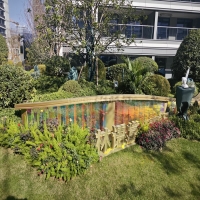Welcome to the website for landscape facilities products and knowledge.
How does fabric interact with geothermal heat in hot spring landscape art?
In the realm of hot spring landscape art, fabric serves as a dynamic medium that interacts uniquely with geothermal heat, creating mesmerizing visual and tactile experiences. Geothermal energy, harnessed from natural hot springs, provides a consistent heat source that can transform textiles in unexpected ways. Heat-reactive fabrics, such as those infused with thermochromic pigments, shift colors when exposed to varying temperatures, adding a layer of ephemeral beauty to outdoor installations.
Beyond aesthetics, fabric in geothermal art also addresses sustainability. Natural fibers like cotton or bamboo absorb and retain heat, offering insulation while harmonizing with the environment. Artists often weave these materials into large-scale tapestries or floating sculptures that ripple with steam, blurring the line between art and nature.
The interplay between fabric and geothermal heat also raises questions about durability. Synthetic textiles, though less eco-friendly, may withstand prolonged exposure to mineral-rich waters better than organic alternatives. Innovations in fabric coatings—such as silica-based treatments—help preserve artworks while allowing heat to alter their form organically.
Ultimately, hot spring landscape art celebrates the dialogue between human creativity and Earth’s energy. By manipulating fabric’s response to geothermal heat, artists craft immersive spaces that invite viewers to reflect on the delicate balance of natural forces and artistic intervention.
Related search:

Recommendation
Metal and acrylic color-changing combined curtain wall for large-scale public landscape facilities